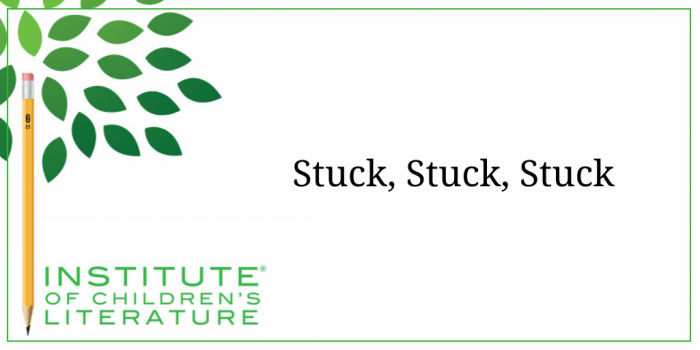1000 N. West Street #1200, Wilmington, DE 19801
© 2024 Direct Learning Systems, Inc. All rights reserved.

Are you stuck, stuck, stuck?
How often have you been working on a story and suddenly, you have no idea what to write next? You’re stuck, and you wish you had someone who could help you out. Actually you do—look to your characters for help.
All too often, the reason for a stuck plot is the lack of depth in all characters. You get things going, setting all the people in place. They all have roles: main character, best friend, mean girl, nice teacher (or maybe mean teacher), etc., and you know how to get them barreling down the road. But if all your characters have only reached the “label”status, it can be hard to keep them moving for the long haul. Real people can deal with twists and turns and even lulls, but characters who are merely labels tend to run out of steam.

So imagine my main character is in a scene with a character with whom he doesn’t get along. My main character may have an overall desire (in the story) to make a friend. He has an immediate desire (in this scene) to make the other character go away so he can find that friend he’s been looking for. But maybe I’m stuck. I don’t know what to have him do. Start a fight? Yell? Be grudgingly polite? One way to catch some clues may be by checking in with the other character as well.
What does the other character want? What does he want overall? What does he want right then? If the conflict character also wants a friend, then maybe he’s just trying too hard and that’s why things aren’t going well? If the conflict character already has a friend and is afraid the main character is going to steal that friend, then that might be causing the problem. Those two very different choices are going to give me very different results in any given scene. Just by asking myself what everyone wants, I find I have choices as to what to do next and I become unstuck.
So the next time you feel stuck, ask all your characters what they want. If could be that the overall goal of one of your characters means that person should be inserted into your scene, thus “unsticking” you. So the more you know these characters needs and desires, the more they’ll write their own story with you hanging on for the ride.
When that happens, hang on tight and enjoy it!
With over 100 books in publication, Jan Fields writes both chapter books for children and mystery novels for adults. She’s also known for a variety of experiences teaching writing, from one session SCBWI events to lengthier Highlights Foundation workshops to these blog posts for the Institute of Children’s Literature. As a former ICL instructor, Jan enjoys equipping writers for success in whatever way she can.
1000 N. West Street #1200, Wilmington, DE 19801
© 2024 Direct Learning Systems, Inc. All rights reserved.
1000 N. West Street #1200, Wilmington, DE 19801
© 2024 Direct Learning Systems, Inc. All rights reserved.
1000 N. West Street #1200, Wilmington, DE 19801
© 2024 Direct Learning Systems, Inc. All rights reserved.
1000 N. West Street #1200, Wilmington, DE 19801
© 2024 Direct Learning Systems, Inc. All rights reserved.

1000 N. West Street #1200, Wilmington, DE 19801
© 2025 Direct Learning Systems, Inc. All rights reserved.

1000 N. West Street #1200, Wilmington, DE 19801
©2025 Direct Learning Systems, Inc. All rights reserved. Privacy Policy.
2 Comments